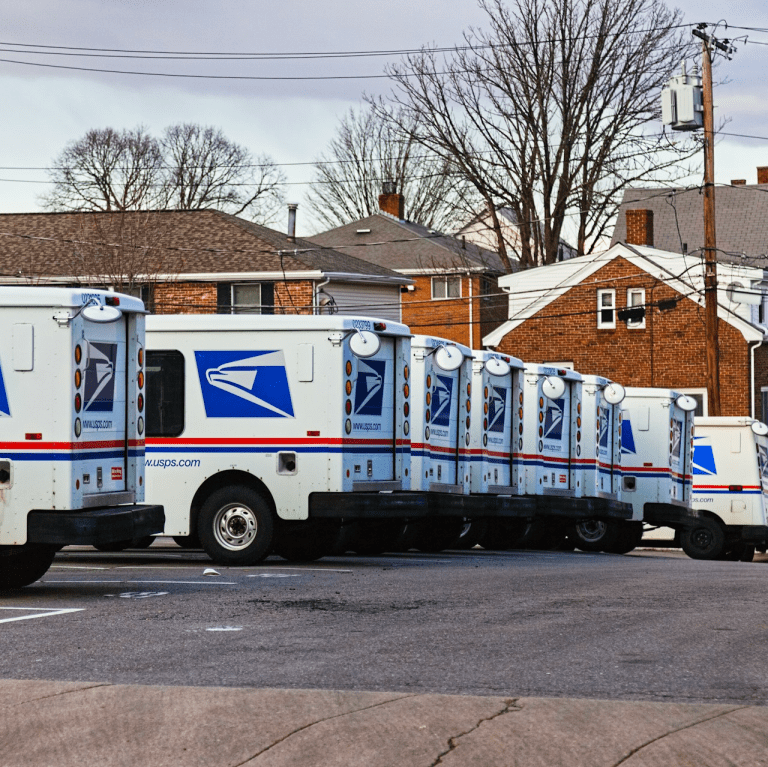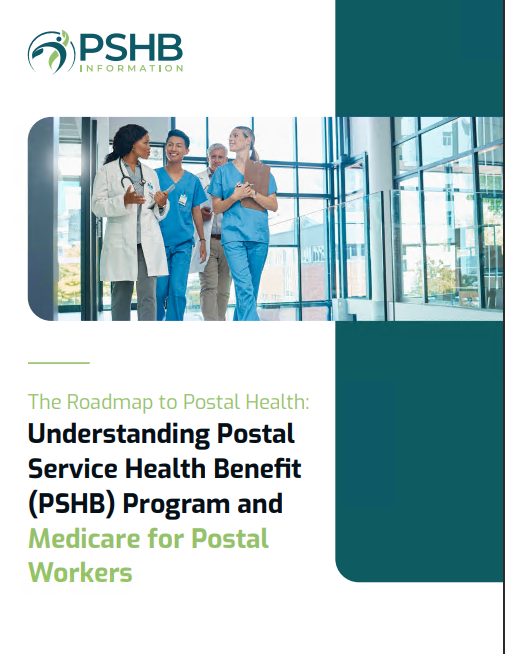Key Takeaways
-
In 2025, all eligible United States Postal Service (USPS) employees and retirees are required to transition from the Federal Employees Health Benefits (FEHB) Program to the newly established Postal Service Health Benefits (PSHB) Program.
-
Certain Medicare-eligible retirees and family members must enroll in Medicare Part B to maintain their PSHB coverage unless they qualify for one of the approved exemptions.
A USPS-Only Health Benefit Program Begins in 2025
The Postal Service Health Benefits (PSHB) Program is now active as of January 1, 2025. This health benefits program is exclusively for USPS employees, retirees, and their eligible family members. It replaces the FEHB Program for the postal workforce, marking a significant shift in your health coverage landscape.
This change is not optional. If you’re an active USPS employee or a postal retiree, you must be enrolled in a PSHB plan in order to maintain health insurance coverage. The PSHB Program was mandated by the Postal Service Reform Act of 2022 and officially takes effect in the 2025 plan year.
Who Must Enroll in PSHB
Enrollment in the PSHB Program is required for:
-
All career USPS employees
-
USPS annuitants (retirees)
-
Eligible family members covered under a USPS enrollee
If you’re a current USPS worker, you will no longer participate in FEHB starting in 2025. If you’re a retiree or an eligible family member of a USPS retiree, you are also included in this transition.
However, if you are covered under a spouse or family member who is not a USPS employee (for example, a federal employee with a non-postal FEHB plan), you may stay on that coverage, provided you remain eligible.
Timeline of Implementation
Here’s a breakdown of the key transition dates:
-
April 1 to September 30, 2024 – Special Enrollment Period (SEP) for Medicare Part B for eligible retirees.
-
November to December 2024 – Open Season for PSHB elections.
-
January 1, 2025 – PSHB coverage officially begins for all USPS enrollees.
As of 2025, your old FEHB plan no longer applies. If you didn’t select a new PSHB plan during Open Season, you were automatically enrolled in a comparable plan.
What Makes PSHB Different From FEHB
The PSHB Program retains many of the familiar features of FEHB but introduces some important changes specifically tailored for USPS members:
-
Exclusivity: PSHB plans are only available to USPS employees and retirees.
-
Medicare Integration: PSHB plans coordinate with Medicare in specific ways, especially for retirees aged 65 and older.
-
Automatic Enrollment: If you were previously enrolled in FEHB through USPS and did not act during Open Season, you were automatically moved to a similar PSHB plan.
-
Eligibility Enforcement: Those required to enroll in Medicare Part B must do so or risk losing PSHB coverage.
Medicare Part B Requirements for Retirees
A central part of the PSHB transition involves coordination with Medicare. If you’re a retiree who is eligible for Medicare Part B, you may be required to enroll in it to maintain your PSHB coverage. This requirement only applies to specific individuals:
You must enroll in Medicare Part B if:
-
You are a USPS annuitant or a family member who is Medicare-eligible and turned 65 before January 1, 2025
-
You are not already enrolled in Medicare Part B
You are exempt from the requirement if:
-
You retired on or before January 1, 2025 and are not enrolled in Part B
-
You are actively employed and not yet retired
-
You live abroad where Medicare does not apply
-
You receive benefits from the VA or Indian Health Service
Failing to meet the enrollment requirement without qualifying for an exemption will lead to a loss of prescription drug coverage and restricted access to PSHB benefits.
Prescription Drug Coverage Under PSHB
Prescription drug benefits are now automatically included through a Medicare Part D Employer Group Waiver Plan (EGWP) if you are Medicare-eligible. This integration helps manage drug costs more efficiently and includes:
-
A $35 monthly cap on insulin
-
An annual out-of-pocket maximum of $2,000 for prescription drugs
-
Access to an expanded national pharmacy network
If you opt out of this EGWP coverage, you may lose all drug coverage under PSHB and might not be able to reenroll later.
What This Means for Active Employees
As a current USPS employee, the change to PSHB means that during each year’s Open Season, you must choose a PSHB plan. Your premiums, deductibles, and out-of-pocket costs may differ slightly from what you were used to under FEHB, but many benefits remain comparable.
You’ll continue using LiteBlue to make elections during Open Season. It’s also the main portal for reviewing plan options and comparing benefits.
What This Means for Retirees
If you’re already retired, your enrollment is handled through KeepingPosted.org, and you should have received notices about the automatic transition.
Here’s what else you should know:
-
If you’re Medicare-eligible, your coordination of benefits is more important than ever
-
You can expect reduced copayments and waived deductibles if you’re enrolled in both Medicare Part B and a PSHB plan
-
Your premiums are still partially subsidized, with USPS covering a large portion of the cost
Premium Contributions and Cost Sharing
In 2025, premium contributions for PSHB are similar to those under FEHB. You’ll still see the government covering about 70% of the premium, with your share depending on your selected plan and enrollment type (Self Only, Self Plus One, or Self and Family).
Deductibles and coinsurance vary by plan, but PSHB generally maintains:
-
Deductibles between $350 and $2,000 depending on the plan type
-
Coinsurance for in-network care around 10% to 30%
-
Copayments ranging from $20 to $150 depending on service
-
Out-of-pocket maximums of $7,500 (Self Only) and $15,000 (Family)
Retirees with Medicare Part B may experience reduced out-of-pocket expenses across many services.
Annual Election Period and Life Events
Just like with FEHB, the PSHB Program includes an annual Open Season every November through early December. During this time, you can:
-
Change your PSHB plan
-
Add or remove eligible family members
-
Switch between Self Only, Self Plus One, or Self and Family
Outside Open Season, changes are only allowed during Qualifying Life Events (QLEs), such as:
-
Marriage or divorce
-
Birth or adoption
-
Change in Medicare eligibility
-
Death of a covered family member
Make sure you report QLEs promptly through LiteBlue or KeepingPosted.org to ensure continued coverage.
Impact on Other Benefits
The new PSHB Program affects only your health insurance. Your other federal benefits are unaffected, including:
-
FEDVIP (Dental and Vision Insurance)
-
FEGLI (Federal Life Insurance)
-
FLTCIP (Long-Term Care Insurance)
-
FSAFEDS (Flexible Spending Accounts)
You may still manage and elect these benefits during their respective Open Seasons.
Why This Transition Matters
The PSHB Program aims to create a separate, financially stable health benefits system tailored for USPS participants. By coordinating more closely with Medicare and managing costs more efficiently, it is designed to preserve your long-term access to quality healthcare while aligning with USPS’s fiscal objectives.
If you are not proactive, you risk automatic enrollment that may not meet your specific needs—or worse, a loss of coverage if you miss Medicare Part B enrollment deadlines.
Ready to Make the Right Choice?
If you are a USPS employee or retiree, understanding the PSHB Program is essential for protecting your health benefits in 2025 and beyond. Make sure you:
-
Review plan options thoroughly
-
Enroll in Medicare Part B if required
-
Use the right platform (LiteBlue or KeepingPosted.org) for elections
-
Watch for notices during Open Season
For expert assistance in evaluating your PSHB choices or navigating Medicare requirements, speak with a licensed agent listed on this website.







